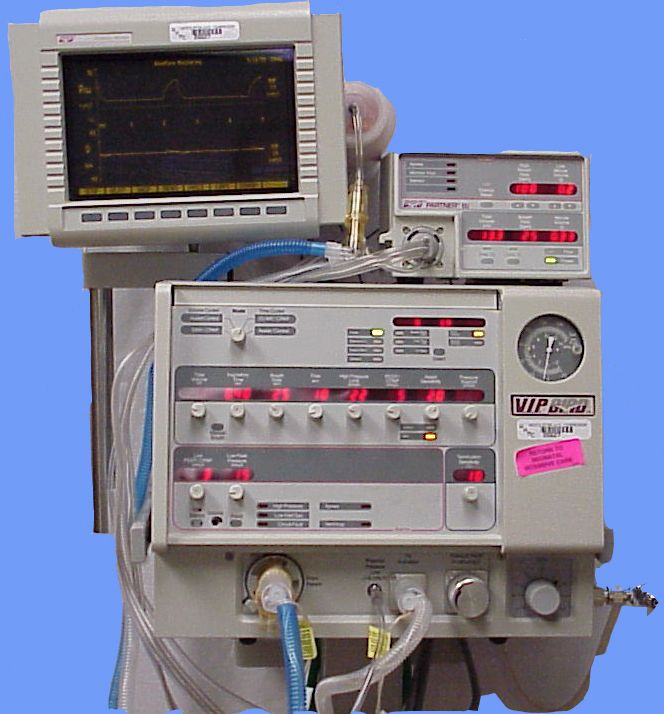Preparing for a flu pandemic
The last global outbreak of a new strain of flu was in 2009, with influenza A H1N1. The virus was first identified in Mexico, and spread rapidly worldwide, with the first reported case in New York City in Queens that same month [1]. Although H1N1 affected millions of people, CDC models for a severe pandemic estimate that as many as 1 in 3 Americans could be infected [2].
Preparation is key
We believe some simple planning for an influenza pandemic is one of the most cost-effective preventive measures you can do as part of your disaster planning, before it's too late to take action.
As in many disasters, self-directed planning will be crucial, with shortcomings in national and local pandemic flu preparation limiting the effectiveness of public response. Read on to examine a few national and local issues, with an emphasis on New York City's planning.
And, visit durationhealth.com to learn more about our emergency medication kits. We can help you prepare for medical emergencies, including a pandemic.
Shortcomings in national and local planning
EMTALA
Hospitals nationwide are governed by the Emergency Medicine Treatment and Active Labor Act (EMTALA) which mandates that hospitals must provide emergency care to all presenting patients regardless of their ability to pay. EMTALA may fine hospitals up to $50,000 per violation.
Pandemic flu guidelines do not establish a standard for what hospitals may or may not do under EMTALA if hundreds of infectious patients present to a given emergency department at the beginning of a pandemic. Physicians and other healthcare providers will be confused about their responsibilities and options to optimize treatment in a pandemic. Pandemic plans do not indemnify hospitals to the extent necessary to allow for patient-centered decision-making in the initial stages of a pandemic, and do not establish a chain of command for lifting or modifying restrictions.
Lack of coordination between agencies
In New York City, local response to a flu pandemic would be controlled by City agencies, while decisions regarding hospitals would be controlled by New York State. NYC has plans to carefully coordinate the response of its own agencies, but hospitals would be outside City jurisdiction.

Lack of available medical supplies and equipment
Equipment and staffing required for support of the sickest patients may be the weak link in flu pandemic planning. For example, there is projected to be a significant shortfall in the number of ventilators available for patients who cannot breathe on their own.
One New York City report estimated, "using the same assumptions for a projected 1918-like pandemic produces a projected shortfall of between 2,036 and 9,454 ventilators. Based on these numbers alone, it is important to consider augmenting existing ventilator capacity for adults, children, and neonates in NYC" [3]. It is worth noting that "borrowing" ventilators from another hospital down the block or across the country may prove to be impossible given the possibility of cross-contamination or if there has been a loss of transportation infrastructure.

Unprepared schools
Although children are a key factor in the spread of influenza, a 2006 survey of NYC principals found: "84.1% of principals did not have a pandemic flu plan; Among the few schools with a plan, four out of five principals were not familiar with it; The overwhelming majority of principals said their school had no process for talking with parents, and few have been involved in community level planning efforts" [4].
What you can do
We emphasize a few simple, inexpensive, and evidence-based strategies to prepare for an influenza pandemic. We're likely to see an influenza pandemic in our lifetimes, and adding a few items now to your disaster kit gives you a quick win toward your preparation in a pandemic at low cost.
Stay isolated
CDC recommendations for maintaining isolation in a flu pandemic include:
- Avoid close contact with others; keep a distance of 3 feet or more
- Stay home if someone in your house is sick
- Create a separate room for sick people in the household
- Use a facemask at home or in public
- Do not attend large events
Don't visit the emergency room, except...
Every flu season brings hundreds of thousands of patients to the emergency department who don't need to be there. That's wasted time and increased infectious exposure for patients, and wasted resources for the healthcare system at large.
In a flu pandemic, when maintaining isolation becomes even more important, it becomes crucial to know when and why to make the trip to the emergency department.
Here's a list from the CDC [5] of more concerning symptoms that should prompt you to visit an emergency room, and what those symptoms could mean:
Adults
- Shortness of breath
- Chest pain or pressure
- Confusion or severe dizziness
- Vomiting that is severe or persistent
- Flu-like symptoms that improve but then return with a fever and worse cough
Children
- Fast breathing or trouble breathing
- Bluish skin color
- Signs of dehydration, such as not drinking fluids, no tears when crying, significantly fewer wet diapers than normal
- Not waking up or not interacting
- Extreme irritability, even when held
- Fever and rash
The cornerstone of flu treatment is what's known as supportive care: keeping someone hydrated and as comfortable as possible while the flu virus runs its course. Medical attention is needed when (1) conservative supportive care fails (for example, someone can't hydrate themselves adequately by drinking, and requires IV fluid) or (2) symptoms develop of a disease other than flu. For example, chest pain or trouble breathing are not typical of the flu, even in patients who are in the thick of the illness and feeling awful. These symptoms could indicate a more serious heart or lung problem.
Of particular interest is flu-like symptoms that improve but then return with a fever and worse cough. These symptoms are concerning for a post-viral pneumonia, a bacterial lung infection that can occur following a viral infection like the flu. Such an infection would likely need to be treated with antibiotics.

Recognize that young people are at risk
80% of people who died of H1N1 flu were under the age of 65 [6]. In a flu pandemic, infectious rates are expected to be highest in children, with up to 40% infected. Assume both children and adults to be at risk.
Supplies you'll need
Wear an N95 mask
N95 respirator masks, which provide an improved seal against potential pathogens, are thought to be more protective against flu than a standard surgical mask [7]. We recommend keeping a supply in your disaster kit. It's imperative that the masks fit properly with a tight seal around your face to provide optimal protection.
Oral rehydration solution
Oral rehydration solution, such as Pedialyte, is extremely effective at maintaining hydration in the ill, including those with severe flu. In many cases, oral rehydration solution has been shown to be just as effective as IV fluid [8], and it can help avoid a trip to the emergency room.
Tamiflu
It would likely take 6 months to develop a vaccine against a new strain of pandemic flu [9]. Tamiflu (oseltamivir), only available by prescription, has been shown to be effective in the treatment and prevention of epidemic influenza infection in adults, adolescents and children [10]. However, it becomes difficult to obtain during regular flu season, and would likely be unavailable in the event of pandemic flu. Speak with your doctor, or join Duration Health, to discuss whether a prophylactic supply of Tamiflu would be appropriate for you and your family.
Join Duration Health
Duration Health helps keep you and your family healthy when regular medical care becomes unavailable. Unlike most primary care practices, we don't treat stuffy noses or remind you to schedule your colonoscopy.
Instead, when you join our practice, you'll consult with our emergency medicine and wilderness medicine expert healthcare providers online, identify areas of risk facing you and your family in a disaster.
We'll help you prepare for a flu pandemic and many other potential disasters that put your health at risk.
Visit durationhealth.com to learn more about our prescription emergency medication kits, or contact us at hello@durationhealth.com
Duration Health provides medical advice to those who join our private practice. However, this post is not medical advice. Always seek the expertise of your healthcare professional.
[2]: https://www.cdc.gov/flu/pandemic-resources/pdf/pan-flu-report-2017v2.pdf
[3]: New York City Department of Health and Mental Hygiene. NYC DOHMH Pandemic Influenza Preparedness and Response Plan. July 2006:III.
[4]: Thomas, Gregory A. The New York City Principals Pandemic Flu Survey: Are Schools Prepared? 2007:4.
[5]: https://www.cdc.gov/nonpharmaceutical-interventions/pdf/gr-pan-flu-ind-house.pdf
[6]: https://www.cdc.gov/flu/pandemic-resources/basics/past-pandemics.html
[7]: https://www.ncbi.nlm.nih.gov/pmc/articles/PMC4680957/
[8]: https://www.ncbi.nlm.nih.gov/pmc/articles/PMC2305768/
[9]: https://www.cdc.gov/flu/pandemic-resources/basics/faq.html